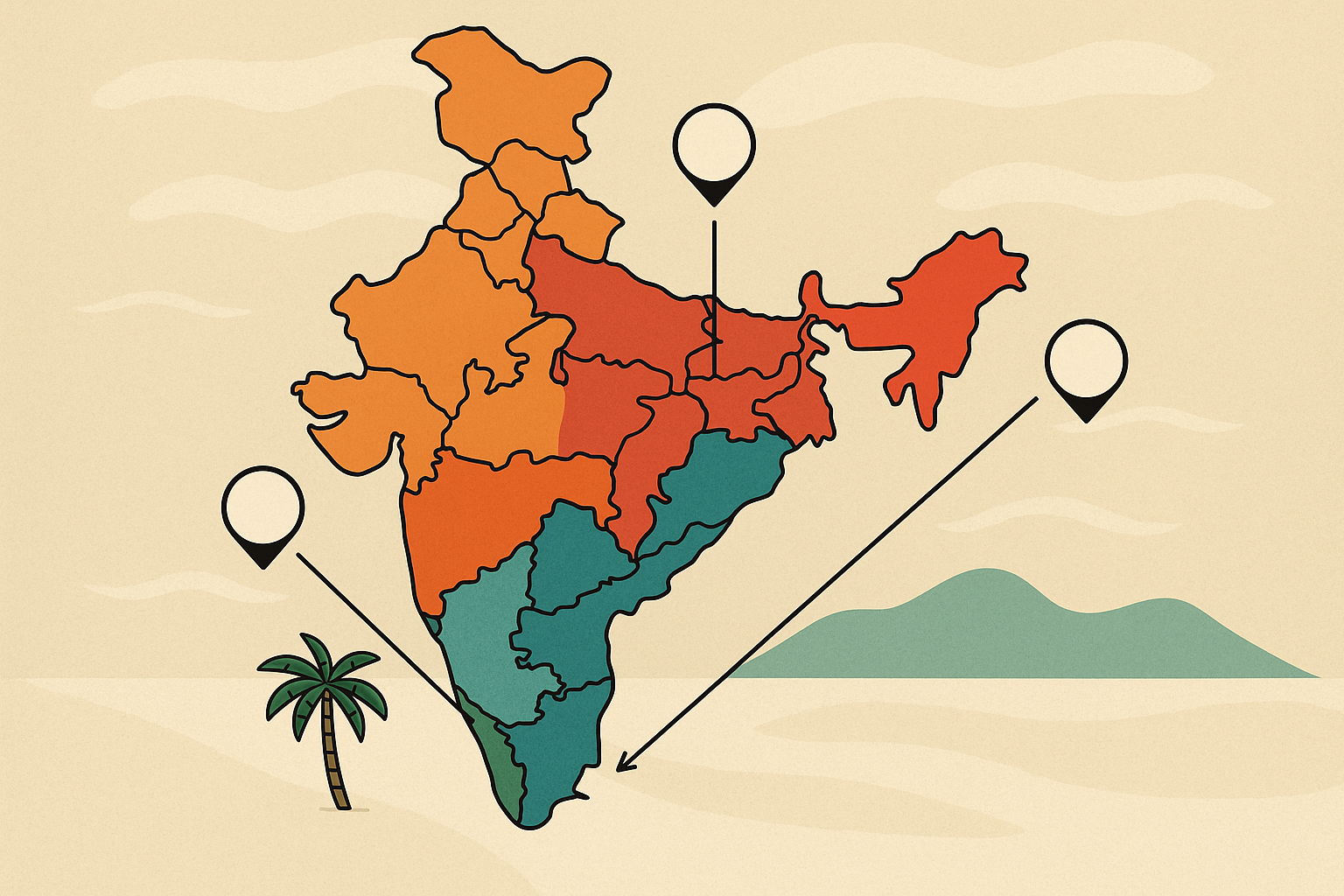You Know the Kerala Model. Here’s How Three Other States Created Their Own
Times Of India

1. Introduction and Context
This article compares the well-known Kerala model of development with the impressive social-sector achievements of Jammu & Kashmir (J&K), Himachal Pradesh, and Tamil Nadu.
For decades, Kerala has been the benchmark for:
- universal literacy
- high life expectancy
- low fertility
- strong public health and education systems
But the author argues that these three states have matched or exceeded Kerala on several indicators, showing that India today has multiple alternative pathways to high human development.
The article uses comparative socio-economic data to show how historical reforms, political movements, and strong state capacity enabled these states to build their own successful models.
2. Key Arguments Presented
a. Kerala’s Model Is No Longer Singular
Kerala’s achievements remain remarkable, but other states have caught up or surpassed Kerala in areas like:
- female literacy
- institutional delivery rates
- maternal and infant health
- school enrollment and dropout rates
This signals a convergence in human development outcomes.
b. Historical Reforms Shaped State Trajectories Differently
Jammu & Kashmir
- Early, radical land reforms ensured broad-based land ownership.
- Public investment in rural education and health created egalitarian social outcomes.
- High female literacy reflects these long-term structural reforms.
Himachal Pradesh
- Strong social cohesion + small population enabled rapid welfare expansion.
- Early focus on girls’ education and rural health.
- Government–community trust contributed to consistent policy implementation.
Tamil Nadu
- Dravidian movement emphasized social justice, anti-caste mobilization, and mass education.
- Strong welfare architecture: mid-day meals, nutrition schemes, public health.
- Industrial growth + social reforms created a balanced development model.
c. Data Comparisons Reveal Significant Convergence
Key indicators:
|
Indicator |
Kerala |
J&K / HP / TN |
|
Female Literacy |
83% |
J&K: 84% |
|
Institutional Delivery |
98% |
HP/TN: 99% |
|
Maternal Mortality |
Very low |
TN comparable |
|
Life Expectancy |
High |
TN nearly equal |
|
TFR |
Replacement level |
All states similar |
Conclusion: Kerala is no longer the sole model of excellence.
d. Strong State Capacity and Political Commitment Were Decisive
All three states:
- prioritised health, education, nutrition
- maintained high public spending
- implemented land reforms (J&K, HP) or social justice reforms (TN)
- built stable, capable state institutions
This shows that political will—not culture—is the true driver of development success.
e. Recent Crises Have Highlighted Kerala’s Vulnerabilities
- COVID-19 exposed fragility in health financing.
- Gulf migration slowdown reduced remittances.
- Ageing population increased welfare burdens.
Meanwhile, other states continued to invest aggressively in social sectors.
3. Author’s Stance
The article adopts an analytical yet celebratory tone toward J&K, Himachal, and Tamil Nadu.
The stance:
- Appreciates these states as new leaders in social development.
- Downplays Kerala’s continuing strengths.
- Suggests that India now has multiple success models, not one.
Tone: optimistic, comparative, and reform-oriented.
4. Bias and Limitations
Bias
- Overly favourable toward J&K, HP, and TN.
- Understates serious challenges:
- conflict and governance issues in J&K
- fiscal pressure and caste inequities in Tamil Nadu
- geographic fragility in Himachal Pradesh
- Presents Kerala’s challenges as decline rather than transition.
Limitations
- No analysis of inequalities within states, especially tribal and remote communities.
- Ignores the role of remittances in shaping Kerala’s model.
- Misses discussions on sustainability, especially in hill states facing climate change.
- Underexplores caste, gender, and social hierarchies in TN.
- Limited assessment of long-term fiscal sustainability.
5. Pros and Cons of the Argument
Pros
- Strong comparative framework.
- Breaks stereotype of Kerala as the only model worth studying.
- Highlights value of land reforms and welfare investments.
- Shows diverse pathways to high human development.
Cons
- Oversimplifies complex socio-economic trajectories.
- Lacks deeper governance and demographic analysis.
- Downplays persistent structural inequalities.
- Ignores future sustainability risks.
6. Policy Implications
a. Public Investment in Health & Education Works (GS II, GS III)
States that prioritise human development achieve faster, more inclusive growth.
b. Land Reforms Transform Social Outcomes (GS I, II)
J&K and HP demonstrate that redistributing land reduces rural poverty and improves social indicators.
c. Political and Social Movements Drive Long-Term Change
Tamil Nadu’s Dravidian movement shows how identity politics + social justice can create durable welfare systems.
d. State Capacity Matters
Strong bureaucratic commitment, not cultural exceptionalism, produces good results.
e. Kerala Needs a Model Upgrade
New challenges—ageing, migration slowdown, NCD burden—require policy innovation.
7. Real-World Impact
If insights are applied:
- Stronger, more tailored development models emerge nationwide.
- Inter-state inequality reduces.
- India's social indicators improve faster.
- More states achieve Kerala-like results.
If ignored:
- Poor states may stagnate.
- Human development gaps may widen.
- Welfare outcomes may diverge across regions.
8. Alignment with UPSC GS Papers
GS Paper I
- Regional disparities
- Social empowerment
- Population and health patterns
GS Paper II
- Welfare schemes
- State capacity
- Education and health governance
GS Paper III
- Human development
- Inclusive growth
- Public resource allocation
Essay
Perfect for essays on:
- Comparative development
- Welfare states
- State capability
- Human development models in India
9. Conclusion and Future Perspectives
The article challenges the long-held belief that the Kerala model is unmatched.
By presenting J&K, Himachal, and Tamil Nadu as equally strong or superior models, it showcases India’s diverse development trajectories.
However, the future will depend on:
- fiscal sustainability
- environmental resilience
- reducing internal inequalities
- strengthening public institutions
Key takeaway:
There is no single path to human development. With strong political will, social movements, and investment in welfare, multiple states can replicate — or surpass — the Kerala model.
